21st September, 2012

The UN says the Pacific parliaments have the lowest women’s representation in the world (PHOTO ABC, Oxfam, Rodney Dekker, file photo)
The United Nations has again taken aim at the lack of representation for women in Pacific politics. The UN Development Program (UNDP) says women’s presence in parliaments in Pacific Island states is the lowest in the world, lagging even behind Arab countries. A UNDP study just released says economic progress will be limited in the Asia and the Pacific without equal opportunity for men and women to influence political and economic decision-making.
Speaking from the launch of the report in Bangkok, Kim Henderson, the gender team leader for Asia and the Pacific told Pacific Beat that while it will take parliaments in Asia 50 years to achieve gender balance it may take much longer in the Pacific. “If action isn’t taken to address the current situation it could possibly take longer than that in the small Pacific nations.” she said. Henderson says the nature of Pacific politics makes it unattractive to women.
“At the moment they have electoral systems which generally aren’t friendly to increasing the numbers of women. Most of the small island states have first-past-the-post systems.
“The culture, the set-up often discourages women from being able to perform well, from wanting to choose a life in politics.” she said. Henderson says the hours are often unfriendly to women who also have unpaid work at home or unpaid care work.
“[This is] a particular issue in the Pacific where, in many countries there, women are subsistence farmers and are producing food to feed their families.” she said. But the UNDP study says there is a reasonably simple way to start changing the political culture.
“Research that we’ve done globally at the UNDP shows that reserve seats… are the most effective way of boosting the number of women represented in parliament.
“Looking at those institutional mechanisms and policy changes can gradually effect change in relation to culture.” she said. Australia has promised $30 million a year for the next 10 years to raise the status of women in the Pacific. Henderson says the Australian Government’s packages tackles issues that affect the status of women generally and their participation in politics.
“There’s a focus on women’s leadership and decision-making and this can focus on the local level as well as the national level and the public service,” she said.
SOURCE: RADIO AUSTRALIA via PACNEWS
* * *
[Nadi– July 22, 2011] Strategic partnerships, targeted communications, enabling legislation and training women for leadership roles were highlighted as some of the crucial ingredients in increasing the number of women in decision-making in the Pacific.
These points were raised by four women who spoke at a panel discussion on “Supporting Pacific Women in Public Life and Decision-Making” that took place yesterday at the 4th Pacific Women’s Ministerial Meeting.
The speakers included: Ethel Sigimanu from the Solomon Islands; Hon Dame Carol Kidu, Papua New Guinea’s Minister for Community Development and Women’s Affairs; Léna Temauri from French Polynesia, and United Nations Development Programme’s (UNDP) Kim Henderson.
Strategic Partnerships
Ethel Sigimanu, the Permanent Secretary of the Solomon Islands Ministry of Women, Youth, Children and Family Affairs spoke about her country’s experience in trying to get legislation on Temporary Special Measures to increase the number of women in Parliament.
Temporary Special Measures (TSM) or affirmative action policies like quotas are specifically permitted under Article 4 of the Convention on the Elimination of allforms of Discrimination Against Women (CEDAW) as a short-term measure to “kickstart” an increase in women’s representation, while longer-term efforts are being made to create a more equal and sustainable level playing field for women in politics.
Ms Sigimanu said that in 33 years of government in Solomon Islands, there had only been one female parliamentarian. In 2009, the Women’s Ministry started a campaign for TSM to introduce reserved seats for women through legislative change. She said that the “TSM submission could not be taken to Cabinet because the voices against it were stronger than the voices for it.”
“We have learnt a few lessons in this process. We realise that we should have reached a critical mass of people in the community that understood and supported TSM. Buy-in from parliamentarians is critical as is the need for male champions,” said Ms Sigimanu.
Creating Space
Hon Dame Carol Kidu, Papua New Guinea’s Minister for Community Development and Women’s Affairs said that, “The political environment in Melanesia (except in the French Territories) does not give equal opportunities for women to win seats in Parliament.”
She said that cultural perceptions needed to be addressed and a targeted communications strategy supported this process.
“Women in parliament is about partnership in development, it is not about women being stronger than men. It is not about taking men’s places. Temporary special measures are about creating some space for women,” she said.
Support for Women Leaders
Léna Temauri, Advisor to the Minister of Culture, Arts, Family and Women’s Affairs of French Polynesia spoke about how the French Parity Law increased the number of women in local and national government.
“While this law has increased the number of women in decision making roles, work still remains to be done particularly in the areas of training women for leadership roles and changing the public’s opinion about women in decision making, ” she said.
Lessons from the Rest of the World
Kim Henderson, the Gender Team Leader for UNDP in the Asia Pacific Region shared examples of how the numbers of women in decision making could be increased.
“In 2010, forty five percent of the countries globally had some form of temporary special measures to increase the number of women in Parliament. These countries have almost double the amount of women in parliament than countries without them,” said Ms Henderson.
She said that the type of Temporary Special Measures most suited to a country depended on its electoral system.
“Another entry point for increasing the number of women in decision making roles is through local governments. There are a greater number of seats available and higher chances of winning them,” she said.
The Pacific region has the lowest percentage of women parliamentarians in the world and includes four of the six countries in the world with no women legislators: Micronesia, Nauru, Solomon Islands and Tuvalu.
“In 2010, five Parliamentary chambers renewed with no women members and 4 of these 5 are in the Pacific – Nauru, Solomon Islands, Tonga, Tuvalu,” said Ms Henderson.
The discussion was organized by UNDP in partnership with the Pacific Islands Forum Secretariat and the Secretariat of the Pacific Community (SPC).
The Pacific Women’s Ministerial Meeting, during which the discussion took place is organized by SPC. It brings together ministers, government officials, civil society and development partners working in the area of gender from 22 Pacific Island Countries and Territories.
For further information contact:
UNDP Communications Specialist Shobhna Decloitre on (679) 9926396 or Shobhna.decloitre@undp.org
Back to News


